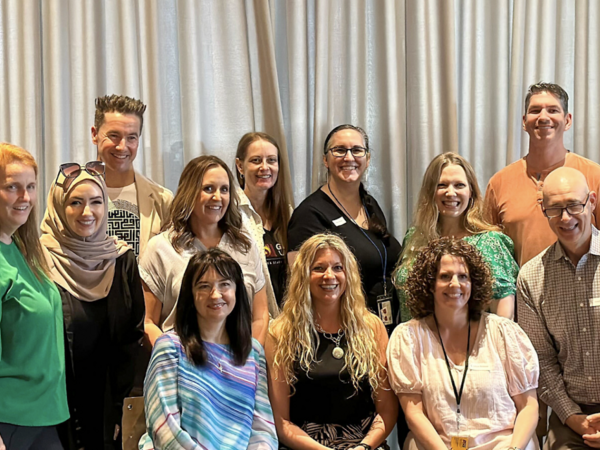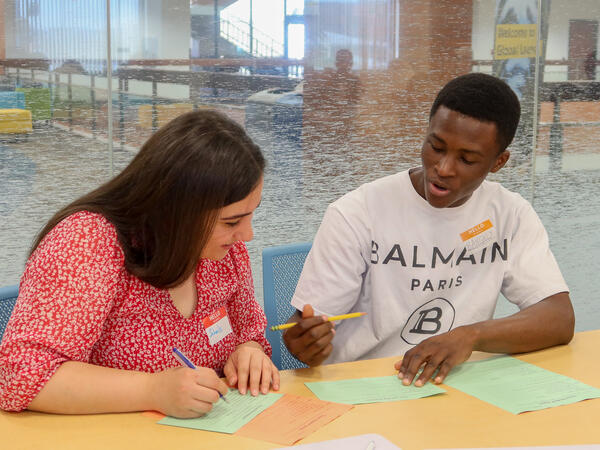
Trauma: recognizing a growing challenge for international college students
As trauma increases amongst students, educators can adopt new teaching methods to help them cope
We often believe that trauma, violence and chronic stress are only experienced by specific populations of students. While we know student refugees, veterans and non-traditional adult students are more likely to have experienced trauma in their lives, studies are continuing to prove that trauma can impact anyone at any point in their lives. Current research shows that college-age students are much more likely to have experienced at least one potentially traumatic event (PTE) than ever previously believed.
I'm Erin Tamayo, a Global Educator and Program Coordinator for ASU Global Launch. I have worked extensively with individuals who have experienced trauma at different times in their lives and I have helped train our Global Educators and others at ASU in Trauma Informed Education strategies.
What is trauma?
According to the Trauma-Informed Care Implementation Resource Center, trauma is the result of experiencing an incident or group of incidents that are difficult to cope with emotionally and may have lasting effects on an individual's mental, physical, social, emotional, and/or spiritual well-being. Life experiences such as injury, war, pandemics, financial distress, the loss of a loved one, displacement and more can create life-long challenges. In students struggling with the effects of unaddressed trauma, these difficulties will often impact classroom learning.
According to Read et al. (2011), 66% to 85% of college-age students report traumatic event exposure during their lifetime, many having reported multiple exposures by the time they reach college. In an international study, surveying individuals from 24 countries, Benjet et. al., 2015 report that over 70% of the respondents experienced at least one potentially traumatic event (PTE), and 30.5% have experienced 4 or more PTEs. Based on this research many, if not most, students in an international adult classroom have experienced at least one PTE in their lifetime.

How might students exhibit trauma?
Typical emotional expressions of trauma can sometimes be overlooked to the untrained eye, and may resemble a perceived fear of taking risks, possible withdrawal or isolation, anxiety about deadlines or imperfect grades, as well as difficulty in emotional regulation. Furthermore, the cognitive effects of trauma may include difficulty paying attention or retaining information in the academic setting.
There are campus resources available by type of trauma to aid these students; their teachers, in addition, can also have a big impact in the classroom in helping them to adjust.
How can teachers help?
In response to this growing issue, Global Educators from the Global Launch International Education and Training Program at Arizona State University began training on Trauma-Informed Instruction practices to learn about the causes of trauma, how trauma may be exhibited in the classroom, and how to utilize strategies in and outside of the classroom to support students who may have suffered trauma or are experiencing chronic stress. In 2020, Global Launch’s new knowledge was put to the test in response to the realities of the Covid-19 pandemic.
In 2021, Global Launch welcomed a cohort of students with a history of trauma, having escaped from war, violence and oppression in their country of origin. As we expected, we saw a quick uptick in the expression of trauma in our classrooms. As instructors and students continued to build trust in the classroom, more students began to share their own unique realities and various experiences of trauma.

It’s imperative that instructors not only identify and understand the different types of Potentially Traumatic Events (PTE’s) but how PTE’s may affect different people in different ways. Some people may experience a response to trauma for a short amount of time, while others may develop a delayed response or longer-term, chronic difficulties.
Through Trauma-Informed Instruction, we as educators can utilize specific strategies to support learners in our classrooms and help them succeed in their educational goals and beyond.

How exactly do Global Launch educators utilize specific strategies to support learners? Find out in part two of this article: 4 ways Trauma Informed Instruction supports international college students experiencing hardship or chronic stress.




